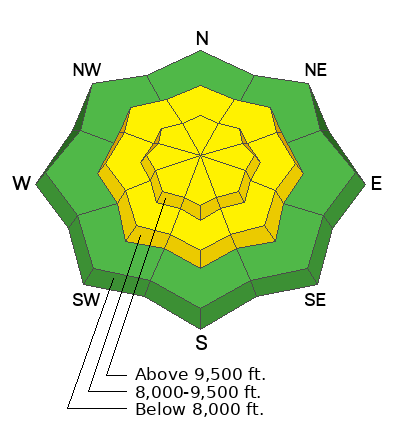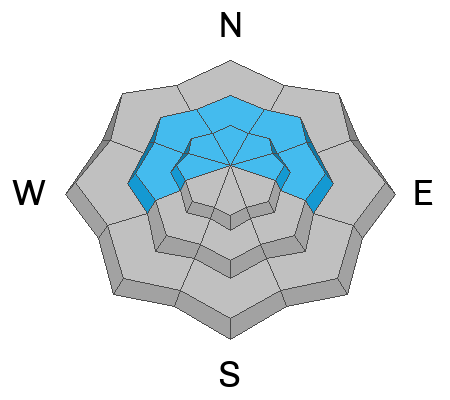Under clearing skies, mountain temperatures have finally turned cold, ranging from 0 to 16 °F, with wind chills well below zero. Along upper-elevation ridgelines, winds from the northwest are blowing 10–25 mph, with gusts reaching into the 30s and 40s. Storm totals range from 6–16 inches of new snow, containing 0.40–1.38 inches of snow water equivalent.
Today, skies will continue to clear, with afternoon temperatures only reaching the low to mid-20s °F. The northwest wind will persist across upper-elevation terrain, blowing 10–20 mph as the storm exits the stadium.
I hate to say it, but today is shaping up to be the best day of the season so far. Cold temperatures, sunshine, a supportable Christmas crust with 6–16 inches of new snow on top make for decent riding... at least for this year.
We received numerous new observations yesterday. Most reports noted dry-loose avalanches failing within the new snow and running on top of the Christmas crust. One avalanche traveled a long distance down Mount Superior. Observers also reported isolated, shallow soft slabs of wind-blown snow. Extended Column Tests continue to show propagation (fracture) on our buried persistent weak layer (PWL).











